What Is YouTube Marketing?
YouTube marketing is the strategic use of YouTube's platform to promote your brand, products, or services.
It’s about leveraging video content to reach, engage, and convert your target audience on one of the world's largest search engines.
A YouTube marketing strategy typically involves:
- Identifying your target audience
- Creating and optimizing video content
- Running targeted YouTube ad campaigns
- Collaborating with YouTube influencers
- Engaging with viewers through comments and community posts
- Analyzing performance metrics to refine your approach
Ready to learn how to create a YouTube marketing strategy? Click here.
Why Is YouTube Video Marketing Important?
Because it provides a powerful platform to reach and engage your target audience through video marketing.
Here’s why it matters:
Expanded Reach
YouTube's user base is massive. It’s the second-most-visited website in the world.
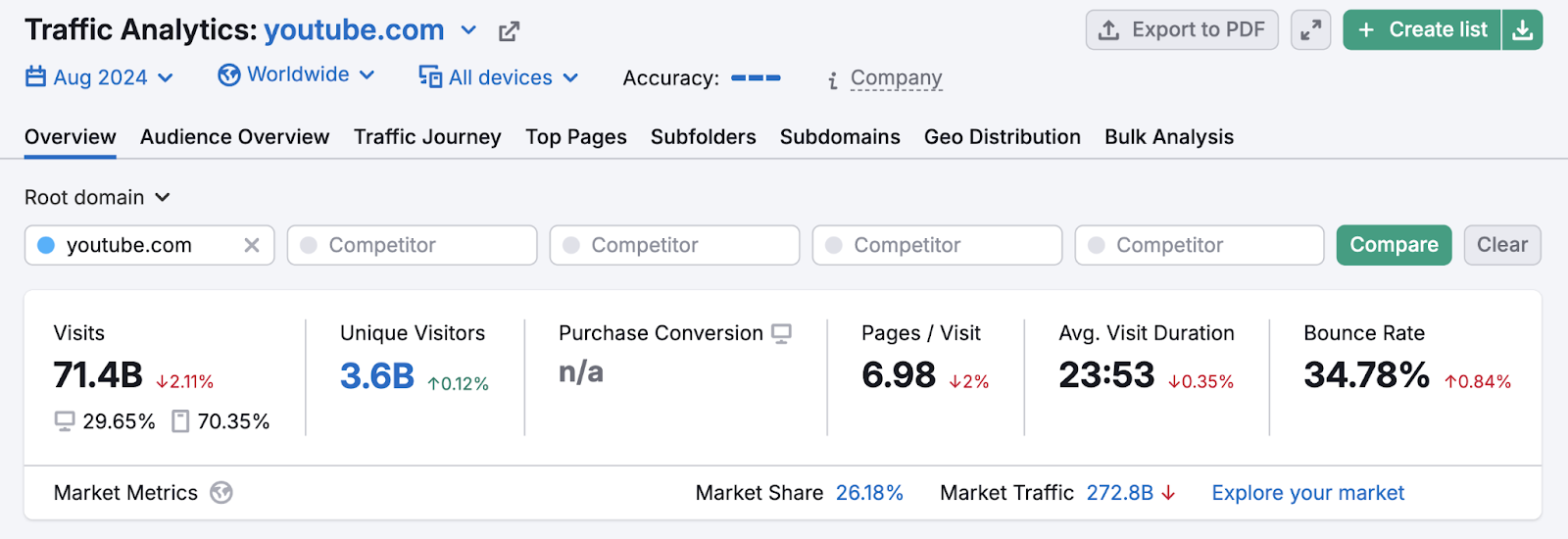
Data from the Semrush Traffic Analytics tool.
And has over 2 billion active users worldwide.
That means unparalleled reach for your brand.
And the ability to find your specific target market, regardless of demographics or interests.
Improved Conversions
YouTube isn't just for brand awareness.
Ninety percent of people say they discover new brands or products on YouTube. And 70% of users have bought from a brand after seeing it on YouTube.
Its format is built for high-impact content that influences buying decisions, like:
- Product demos to showcase your offerings in action
- How-to videos to build trust and demonstrate expertise
- Customer reviews to provide social proof
Plus, YouTube's shopping features let you turn viewers into customers with a single click.
Boosted SEO Visibility
YouTube is more than a video platform. It’s the world's second-largest search engine.
With crucial SEO benefits, like:
- YouTube videos, which often appear in Google's video carousel
- Video thumbnails that increase click-through rates in search results
- YouTube's search algorithm, which can drive organic traffic to your content
Optimizing your YouTube content can supercharge your SEO efforts.
Stronger Brand Authority
YouTube is a great platform to showcase your expertise and build credibility.
Here's how:
- In-depth content, which establishes you as an industry leader
- Regular uploads to keep your brand top-of-mind
- Engaging with viewers, which helps build a loyal community
The result?
A stronger brand that customers trust.
How to Create a YouTube Marketing Strategy
1. Customize Your Channel for Your Brand
Creating a YouTube channel is just the first step. To make an impact, brand it.
Start by setting up your channel following Google’s guidelines.
Then, make it stand out:
- Add a profile picture. Use your logo or a high-quality headshot.
- Create a channel banner. Design an eye-catching header image that reflects your brand.
- Upload a channel trailer. Introduce your content to new visitors.
- Write a compelling "About" section. Explain what viewers can expect from your channel.
- Organize your content. Use playlists to group related videos.
Here’s what Semrush’s YouTube channel looks like, for reference:
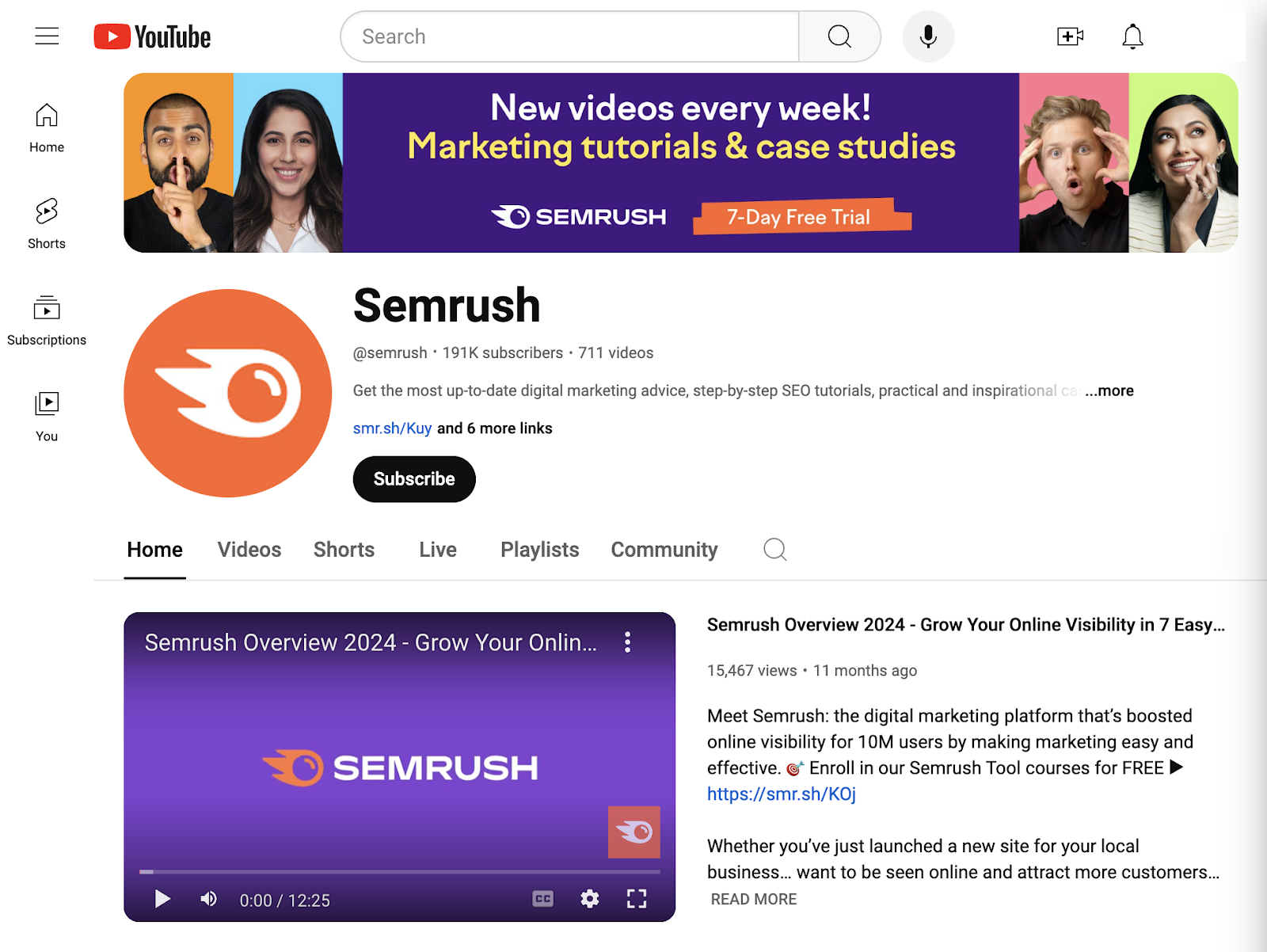
See how it addresses all the steps above?
2. Identify Your Target Audience
A target audience is the specific group of people most likely to be interested in your product or service.
Knowing yours allows you to create content that resonates.
Already have an active channel?
Use YouTube Analytics to uncover viewer demographics, interests, and behavior.
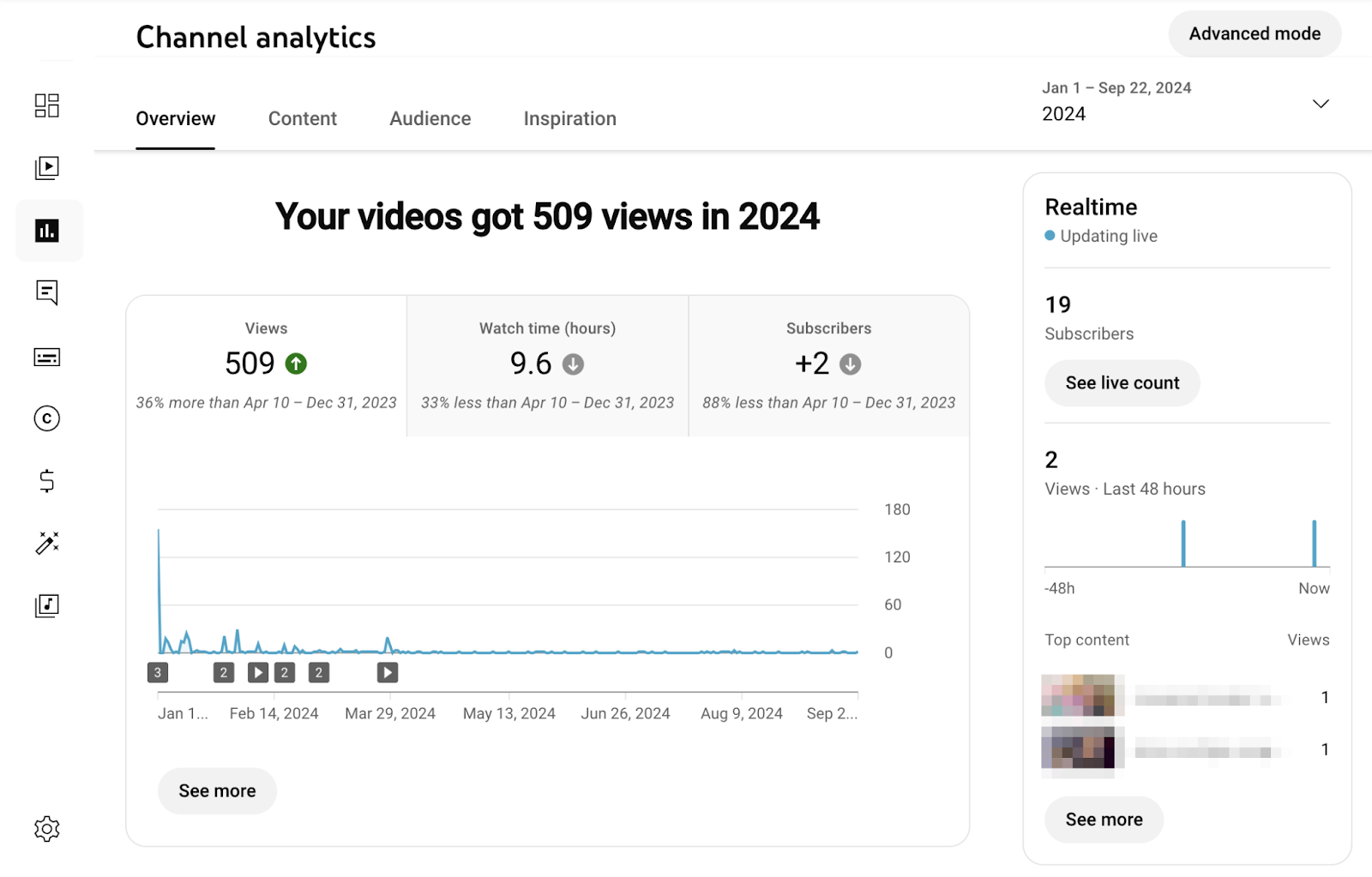
Starting from scratch?
No problem. Use a social listening tool like Brand Monitoring.
It can show you what people are saying about your product or brand on YouTube and other platforms. Plus, it gives you a feel for sentiment around your brand.
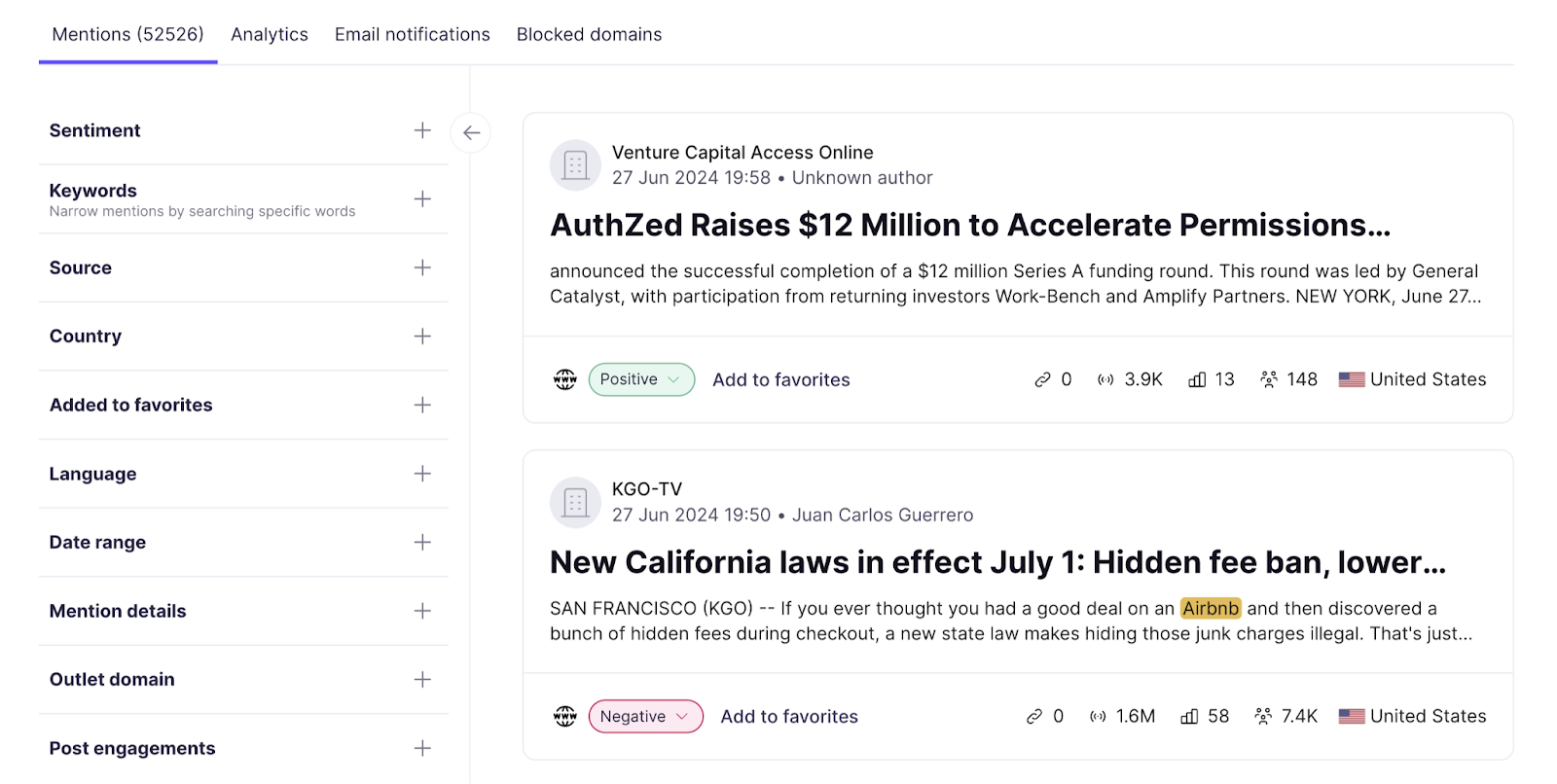
Finally, don't just look at demographics. Dive into psychographics.
What are your audience's goals? Pain points? Desires?
This intel fuels your content (and overall marketing) strategy.
The better you know your audience, the more targeted (and effective) your videos.
Further reading: Audience Analysis: What It Is and How to Do It
3. Create Content for Users
Views come from videos that match user interests. Period.
Find hot topics with Keyword Analytics for YouTube.
In the tool, you’ll see three main tabs:
The “Top Keywords” tab shows the most popular keywords for a chosen period and country.
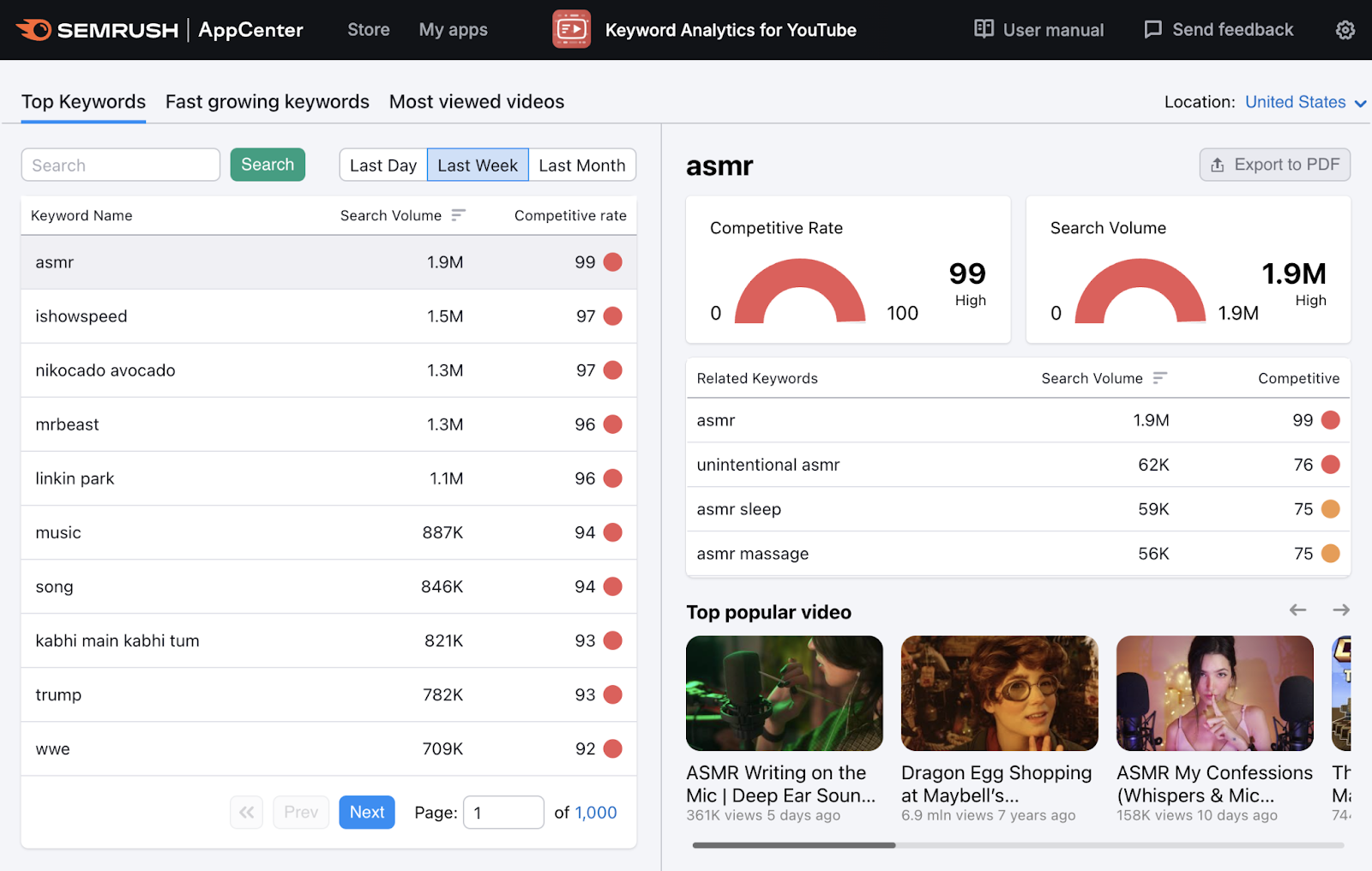
The “Fast-growing keywords” tab displays keyword trends in different countries. And the most popular related videos.
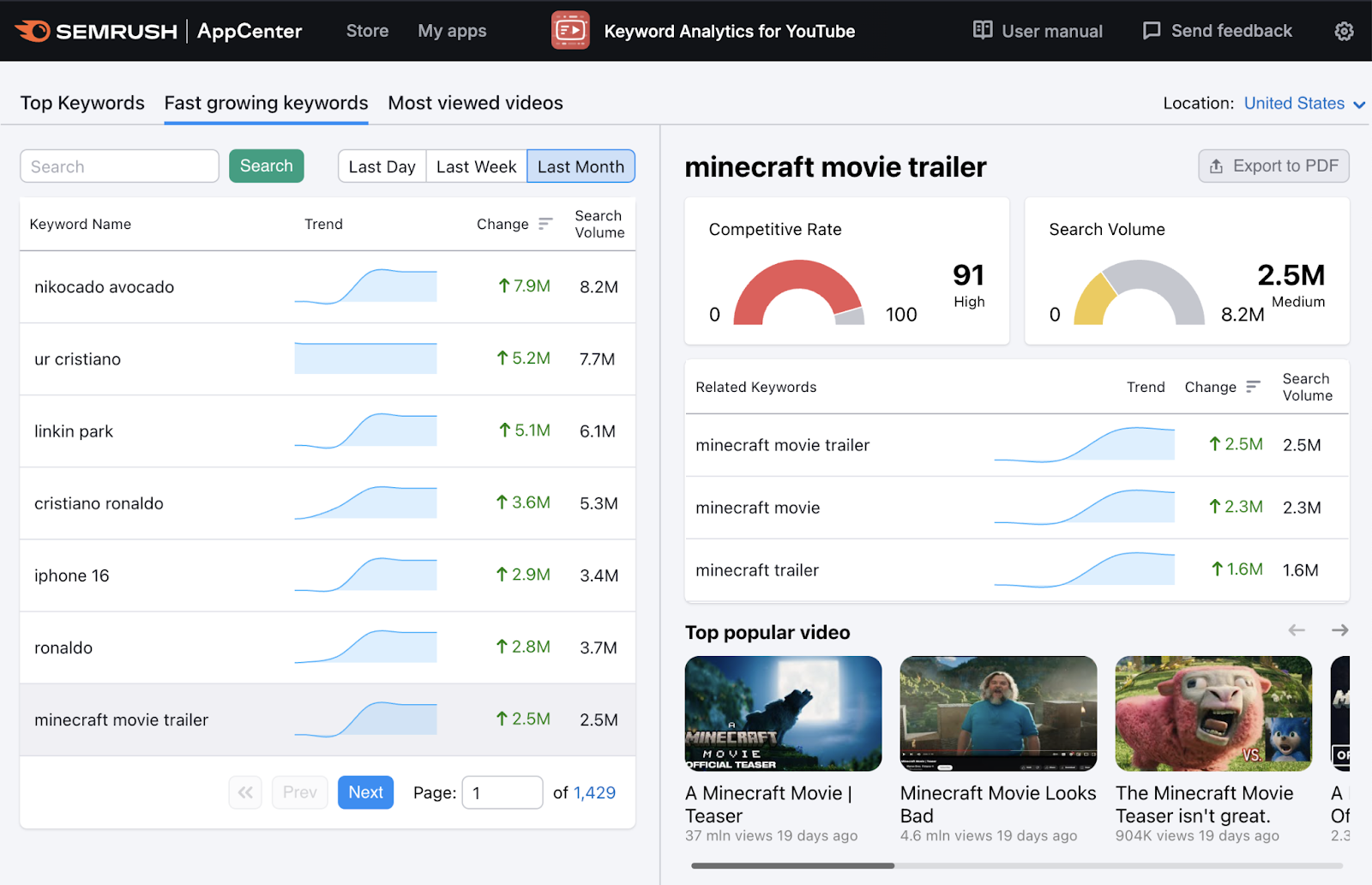
And the “Most-viewed videos” tab shows the most popular videos for a chosen period and country and the keywords they rank for.
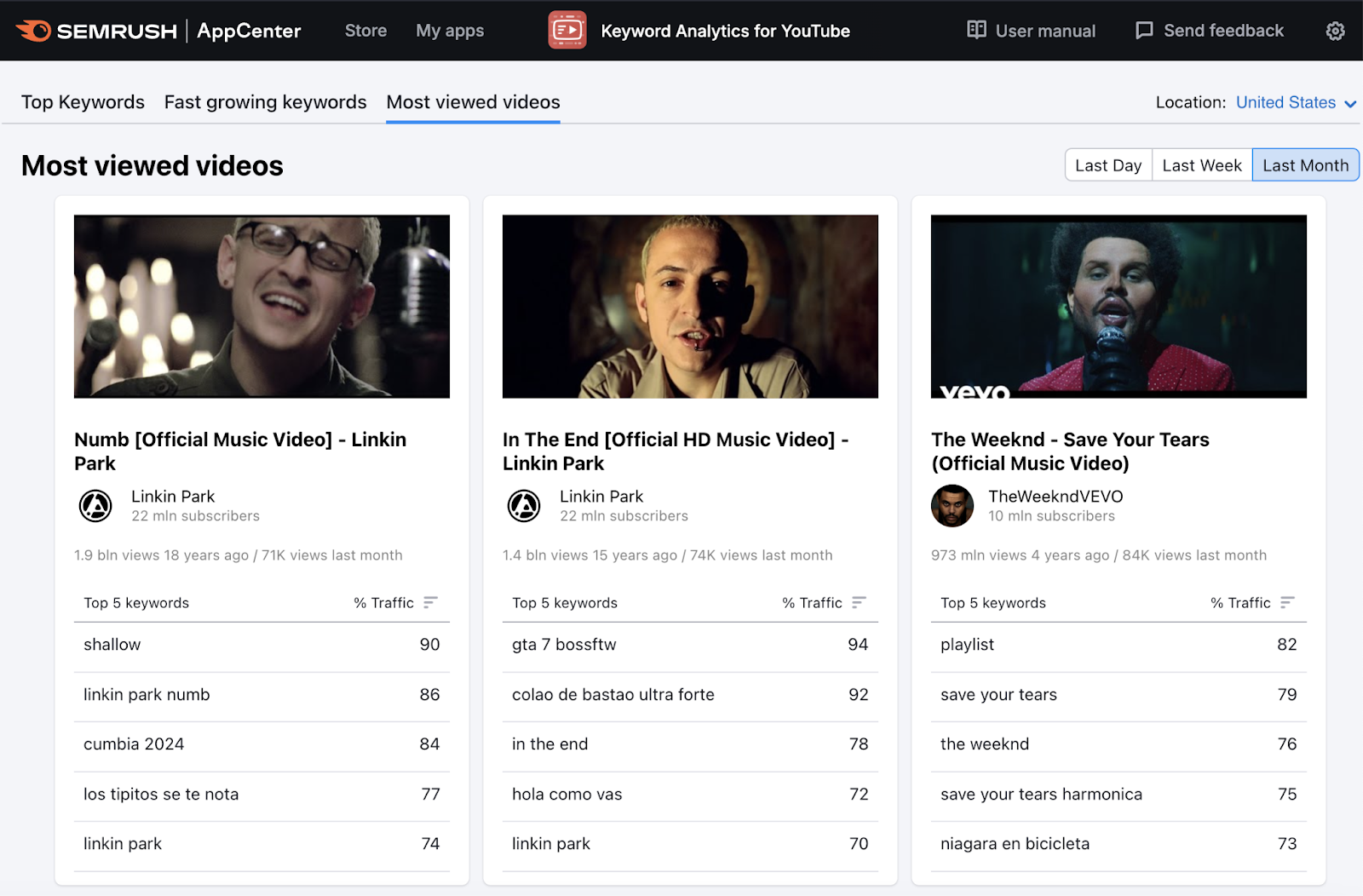
Now you have a data-backed content plan that taps into viewer demand.
Further reading:
4. Optimize Your Videos for YouTube SEO
YouTube SEO is the practice of optimizing your videos to rank higher in YouTube's search results and suggested videos.
Which means YouTube SEO can help you get your content in front of more people without paying for ads.
Here's how to start:
1. Target keywords in strategic places:
- Video title (frontload the keyword)
- Description (use the keyword in the first 1-2 sentences)
- Tags (include your target keyword and related terms)
- Video titles (use secondary or related keywords)
2. Craft compelling titles:
- Keep it under 550 pixels
- Include your keyword
- Use numbers and lists to grab attention
- Highlight the benefit
3. Write detailed descriptions:
- Aim for 200+ words
- Front-load important information and links
- Include your keyword 2-3 times naturally
- Add relevant hashtags (aim for 3-5 max)
4. Choose the right category:
- Select the option that best represents the topic
- Consider less competitive categories for niche topics
5. Use video chapters:
- Break your video into logical sections
- Include timestamps in your description
- Use keyword-rich chapter titles (if they fit naturally)
6. Create eye-catching thumbnails:
- Use high-contrast colors
- Include faces or close-ups when possible
- Add text overlay (but keep it minimal)
- Use high-resolution images
7. Boost engagement signals:
- Encourage likes, comments, and subscriptions
- Respond to comments promptly
- Create playlists to increase watch time
YouTube SEO is an ongoing process.
Keep testing, reviewing your analytics, and refining your approach for the best results.
Further reading: Video SEO: How to Get Your Videos Ranked on Google
5. Create Best-in-Class Video Content
YouTube is crowded. Over 500 hours of video are uploaded every minute.
Your content needs to stand out.
High-quality videos grab attention, boost engagement, and keep viewers coming back for more.
They can also increase your chances of ranking in YouTube search and suggested videos.
Here's how to create engaging video content:
- Nail your hooks. Capture attention in the first 5-10 seconds.
- Invest in good audio. Poor sound quality is a viewership killer.
- Use b-roll footage. Break up talking head shots with relevant visuals.
- Optimize video length. Aim for 7-15 minutes for most topics.
- Go live. Use YouTube Live to connect with viewers in real-time.
- Add closed captions. Improve accessibility and engagement.
- Incorporate interactive elements. Use end screens and cards to boost watch time.
Experiment with other platform features, like YouTube Shorts. To engage viewers and reach new audiences.
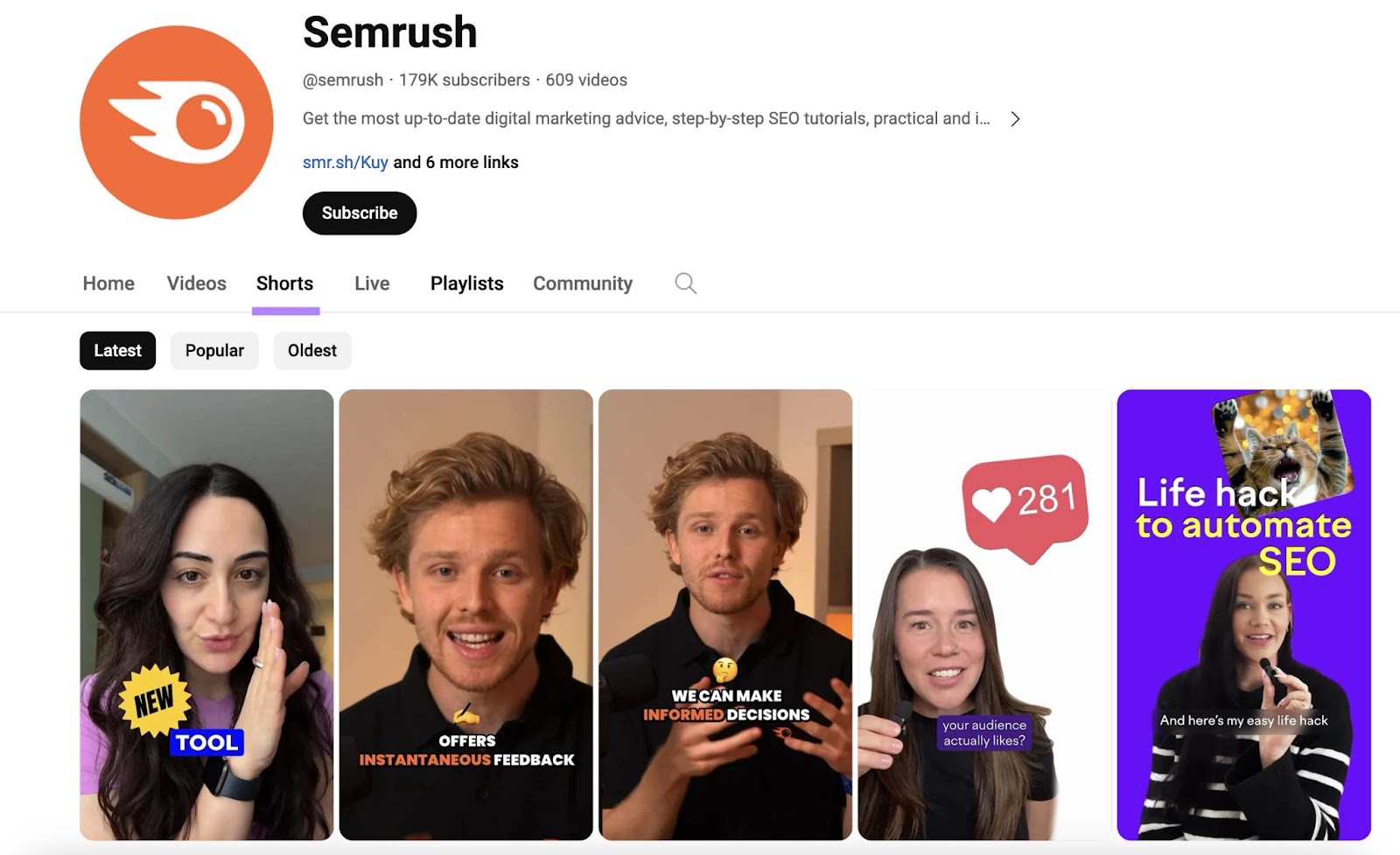
6. Drive Targeted Traffic by Running Ads
Targeted traffic refers to viewers who are likely to be interested in your content or offerings.
Which leads to increased engagement and conversions compared to other traffic.
Drive targeted traffic with YouTube Ads.
YouTube Ads is a paid advertising platform that allows marketers to display video ads to targeted audiences on YouTube.
With YouTube ad targeting, you can reach potential customers while they're watching other videos. Or promote your own content to a wider audience.
Here’s how an in-video ad looks:
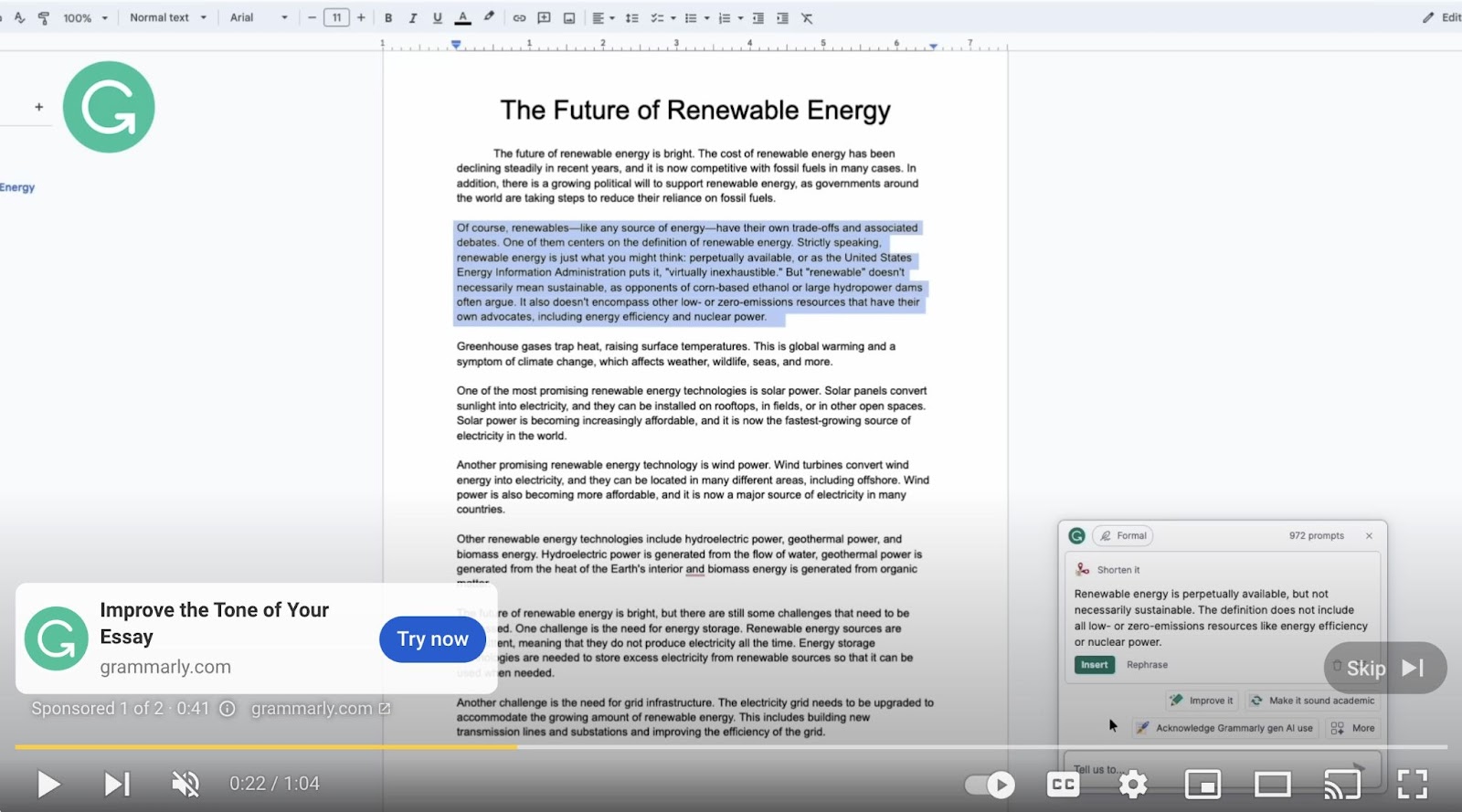
This powerful tool lets you tap into the platform’s massive user base. And target viewers based on demographics, interests, and behaviors.
The main types of YouTube ads include:
- Skippable in-stream ads: Play before or during videos and can be skipped after five seconds
- Non-skippable in-stream ads: 15- to 20-second ads that viewers must watch before their video
- Bumper ads: Short, six-second non-skippable ads
- Discovery ads: Appear in search results and recommended videos
- Masthead ads: Prominently displayed on the YouTube homepage for 24 hours
Running ads is different from your organic YouTube strategy.
Organic content focuses on building an audience over time. Ads quickly boost visibility and drive traffic to your videos or website.
Key benefits of YouTube Ads include:
- Fast exposure to new audiences
- Precise targeting options
- Measurable results and ROI
- Ability to retarget viewers who've interacted with your content
When to use YouTube Ads:
- Launching a new product or service
- Promoting time-sensitive offers
- Reaching a specific audience segment
- Boosting underperforming content
- Driving traffic to your website or landing page
Although you can essentially "buy" views through ads, these don't count toward YouTube's monetization requirements.
Use ads strategically to attract targeted traffic. But rely on organic growth for sustainable success.
Further reading: How to Promote Your YouTube Channel
7. Study Competing Channels
Competitive analysis for your YouTube channel is essential.
Why?
Because it reveals what's working (and what isn’t) in your niche.
Studying your competitors helps you identify:
- Content topics that resonate with your audience
- Effective video formats and styles
- Posting frequency that drives engagement
- Tactics for boosting watch time and subscribers
Use Social Tracker to analyze your competitors’ channels. And track their social media accounts, including YouTube.

Add your YouTube channel’s URL and up to 20 competitor URLs.
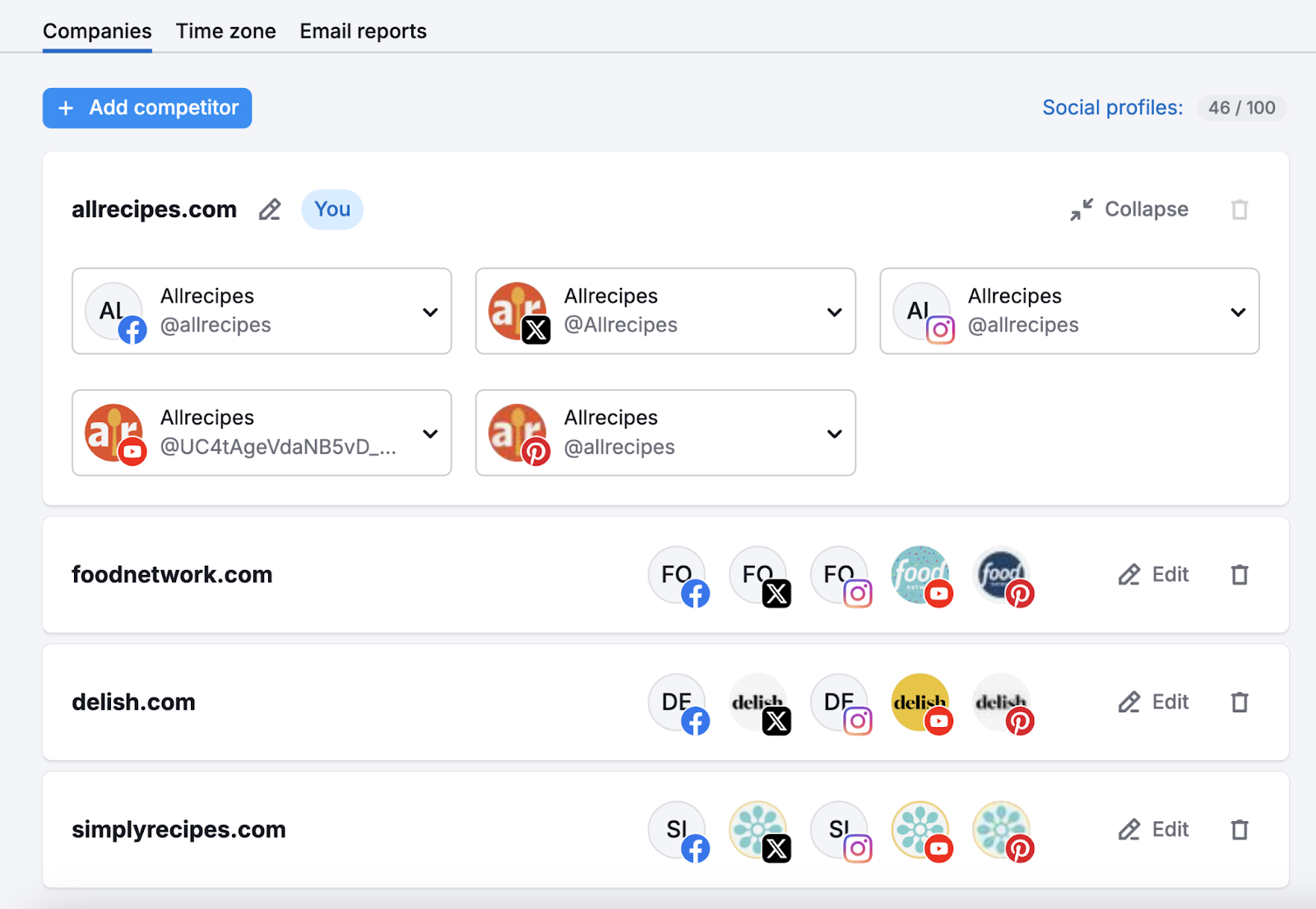
The tool will first show the “Videos” tab.
And a table with your competitors’ uploaded videos and engagement metrics: “Likes,” “Dislikes,” “Comments,” and “Views.”
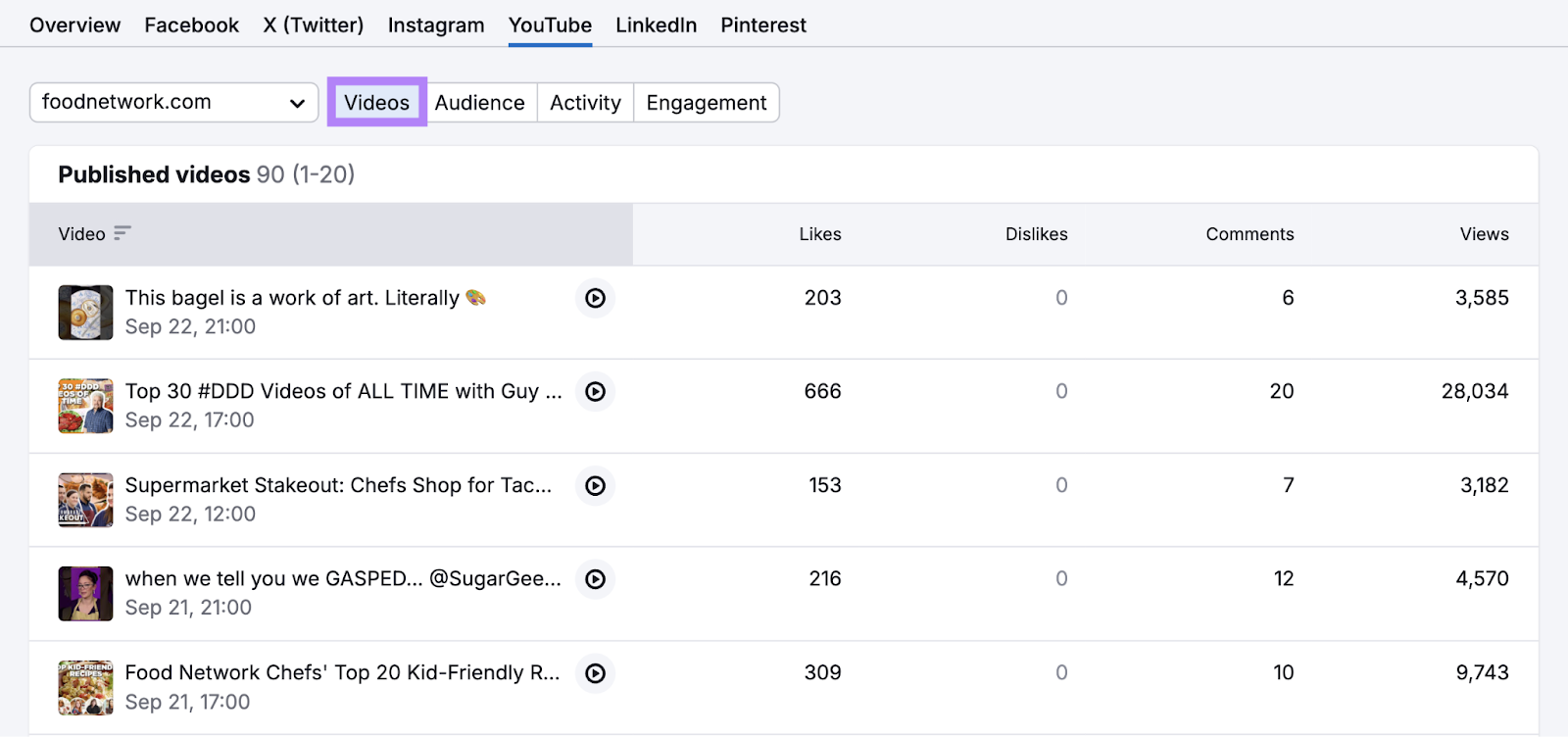
Click the drop-down to analyze a specific competitor’s videos. Or select “All profiles” to compare all competitors at once.
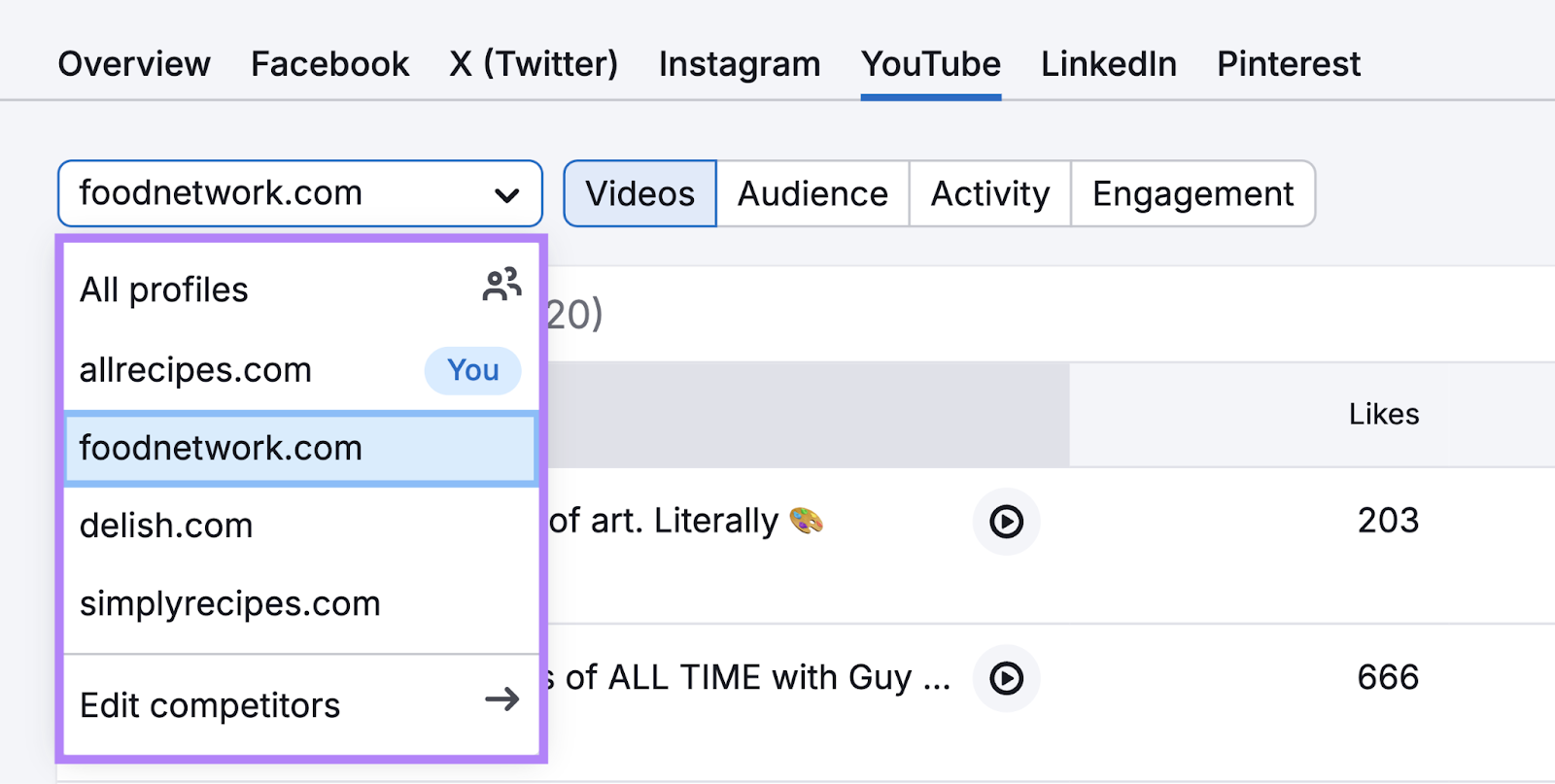
The “Activity” tab helps you compare how often your competitors post videos on YouTube.
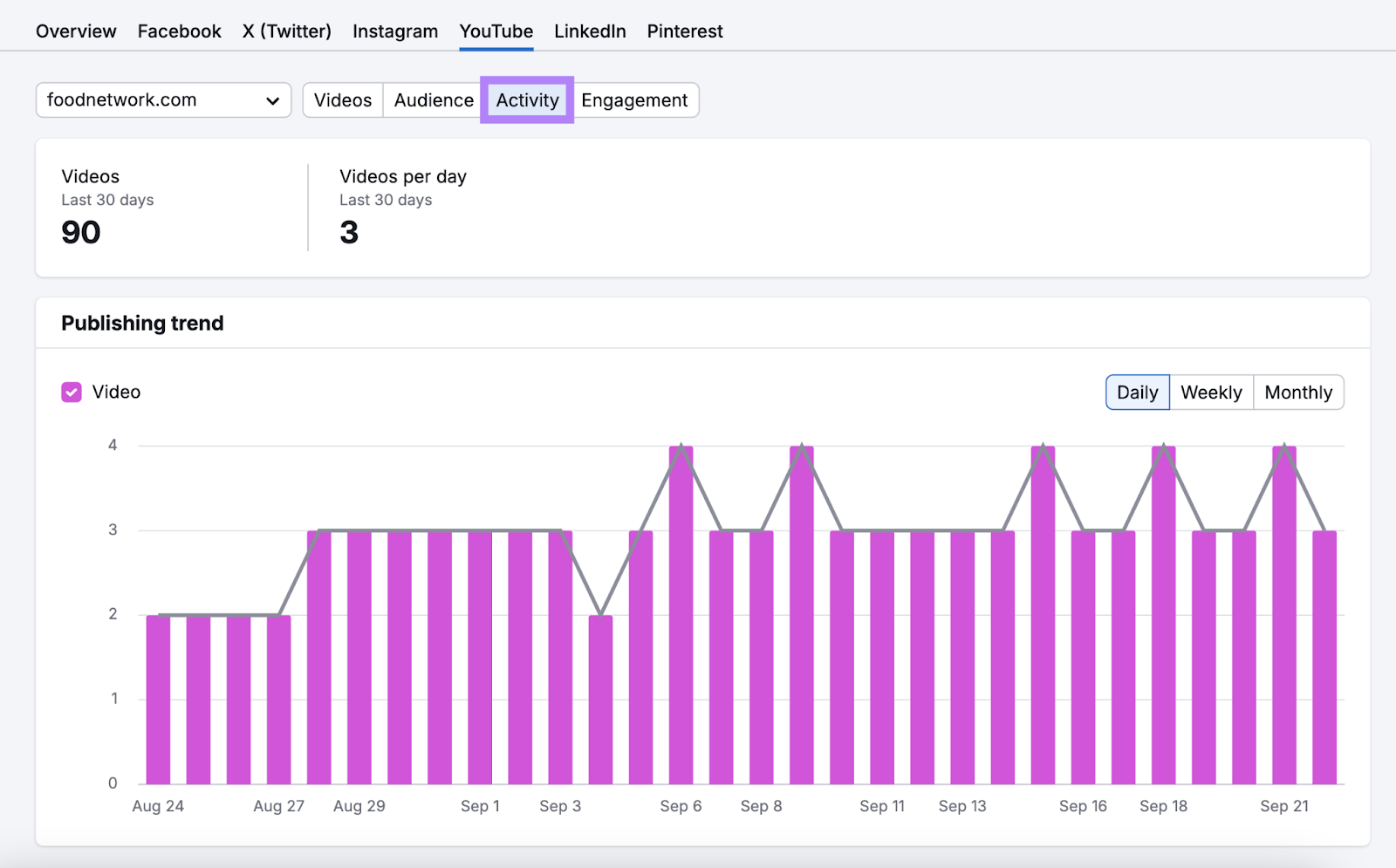
Use these insights to spot trends and opportunities that fuel your own YouTube strategy.
Don't copy competitors. Use their wins as inspiration to create even better content for your audience.
Further reading: How to Perform a Social Media Competitor Analysis in 6 Steps
8. Collaborate with Influencers
Teaming up with influencers can significantly boost your YouTube reach.
Influencers have established trust and credibility with their audience. Which makes their endorsements more impactful.
By collaborating with them, you can tap into their follower base. And increase your brand’s visibility and attract new subscribers.
Different collaboration types include:
- Guest appearances
- Product reviews
- Joint tutorials
- Challenge videos
- Live Q&A sessions
For example, a beauty brand might collaborate with a popular makeup artist on YouTube to create a product tutorial.
This showcases the products and taps into the influencer’s loyal audience.
Find influencers with the Influencer Analytics tool.
It’ll show a table with thousands of YouTube channels sorted by the number of subscribers.
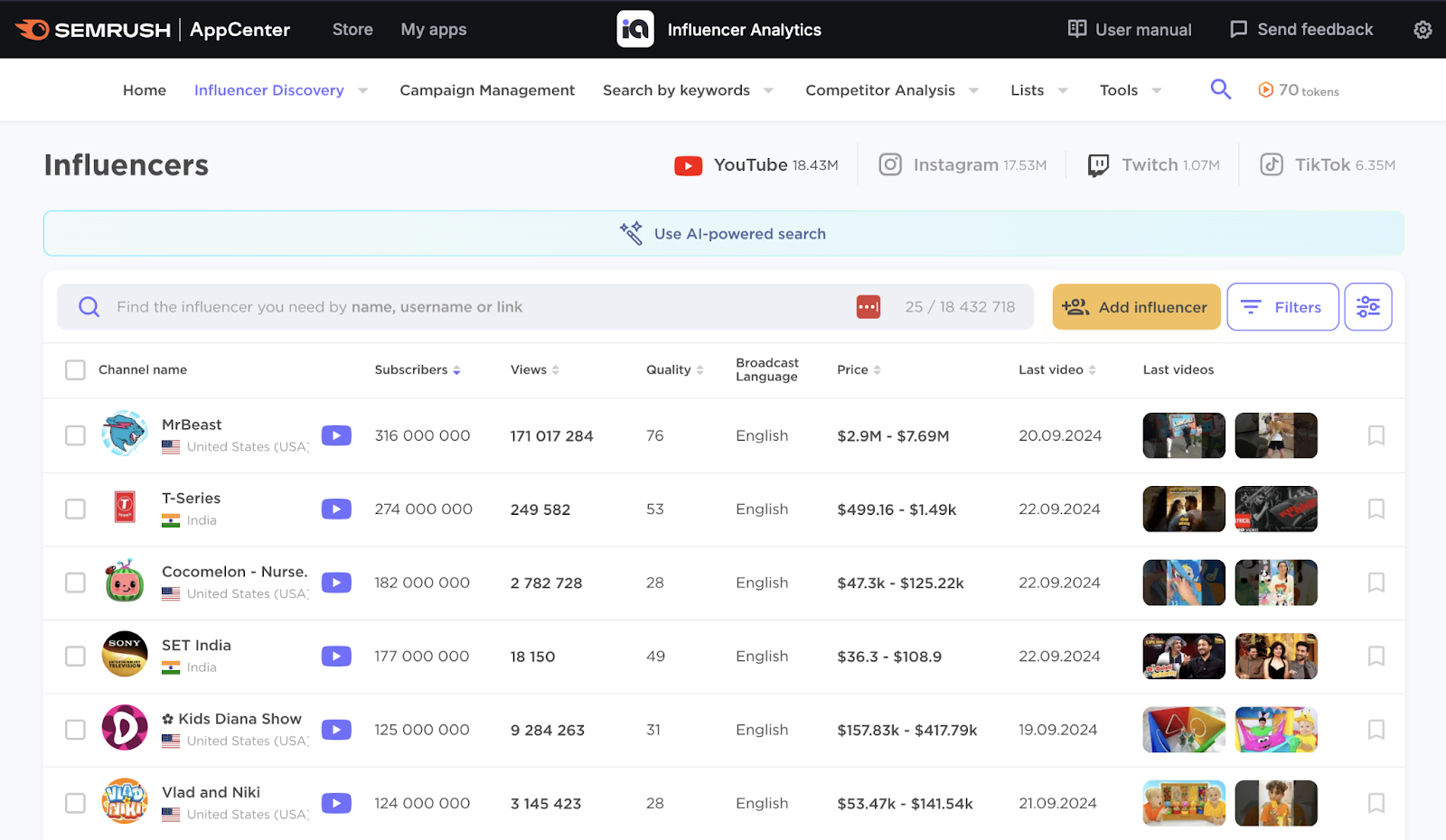
Click the “Filters” button to filter by channel topic, subscribers, price, country, language, and more.

Aim for influencers whose audience aligns with your target market.
It's not just about follower count. Engagement and authenticity are primary.
Further reading:
9. Engage with Your Audience
Interacting with viewers can transform passive watchers into loyal fans.
It's the secret sauce that turns your channel from a broadcast into a community.
Here's why engagement matters:
- Boosts visibility: YouTube's algorithm favors videos with high engagement
- Builds trust: Direct interactions show you're a real person, not just a faceless brand
- Provides valuable feedback: Learn what your audience wants to see more of
How to engage effectively:
- Respond to comments. Answer questions, thank viewers for feedback, and spark discussions. Reply within 24 hours for maximum impact.
- Host live Q&A sessions. Go live to answer viewer questions in real time. This creates a sense of exclusivity and immediacy.
- Share behind-the-scenes content. Post short, casual videos showing your process or daily life. It humanizes your brand and satisfies viewer curiosity.
- Create polls and surveys. Use YouTube's built-in features to gather opinions and involve viewers in decision-making.
- Highlight viewer contributions. Feature user-generated content or shout out engaged subscribers in your videos.
Genuine interaction beats generic responses. Let your personality show to create real connections with your audience.
10. Promote Your Content on Other Social Platforms
Cross-promoting your YouTube videos on other social media channels is like giving your content rocket fuel.
It exposes your videos to new audiences and drives traffic back to your channel.
Here are some quick tips for effective cross-promotion:
- Create platform-specific teasers (e.g., short clips for TikTok, image quotes for Instagram)
- Use eye-catching thumbnails when sharing video links
- Include clear calls to action encouraging viewers to subscribe
- Leverage trending hashtags relevant to your content
To streamline your cross-platform strategy, use Semrush Social.
You’ll get access to different tools like Social Poster, Social Tracker, Social Analytics, and Social Content Insights.
Create and schedule posts, monitor performance, benchmark your progress against competitors, and engage with followers.

Aligning your social media efforts means creating a cohesive brand presence that funnels audiences to your YouTube content. And boost your channel's growth.
Track the Performance of Your YouTube Marketing Efforts
Here's the thing:
YouTube is crowded. And competition is fierce.
That's why tracking your performance is crucial. By closely monitoring your results, you can refine your approach and stay ahead of the pack.
Want to level up your YouTube analytics?
Try the Social Tracker App. It goes beyond YouTube's native stats, letting you directly compare your performance against competitors.
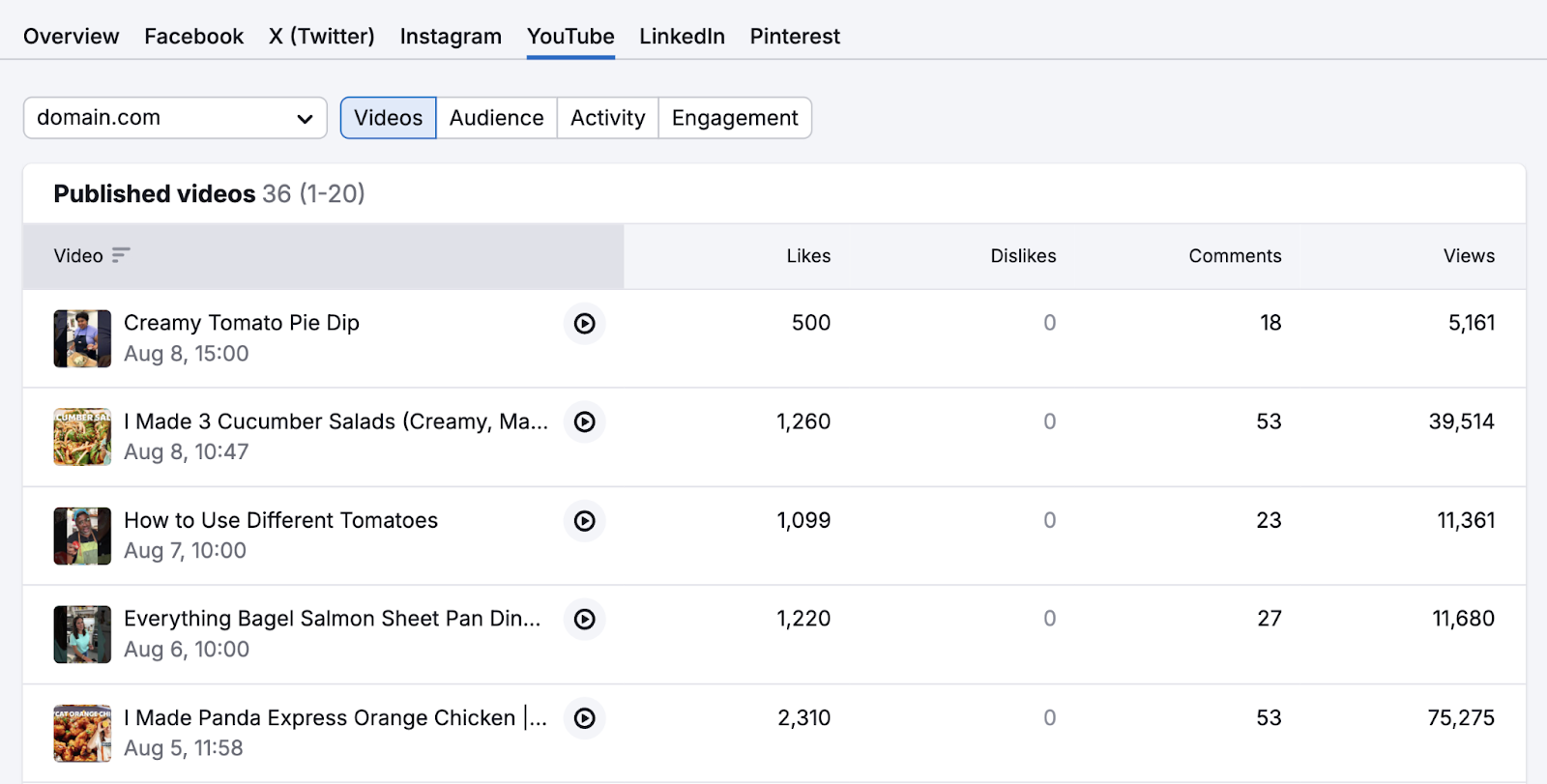
Plus, use Rank Tracker for YouTube to keep tabs on your video rankings.
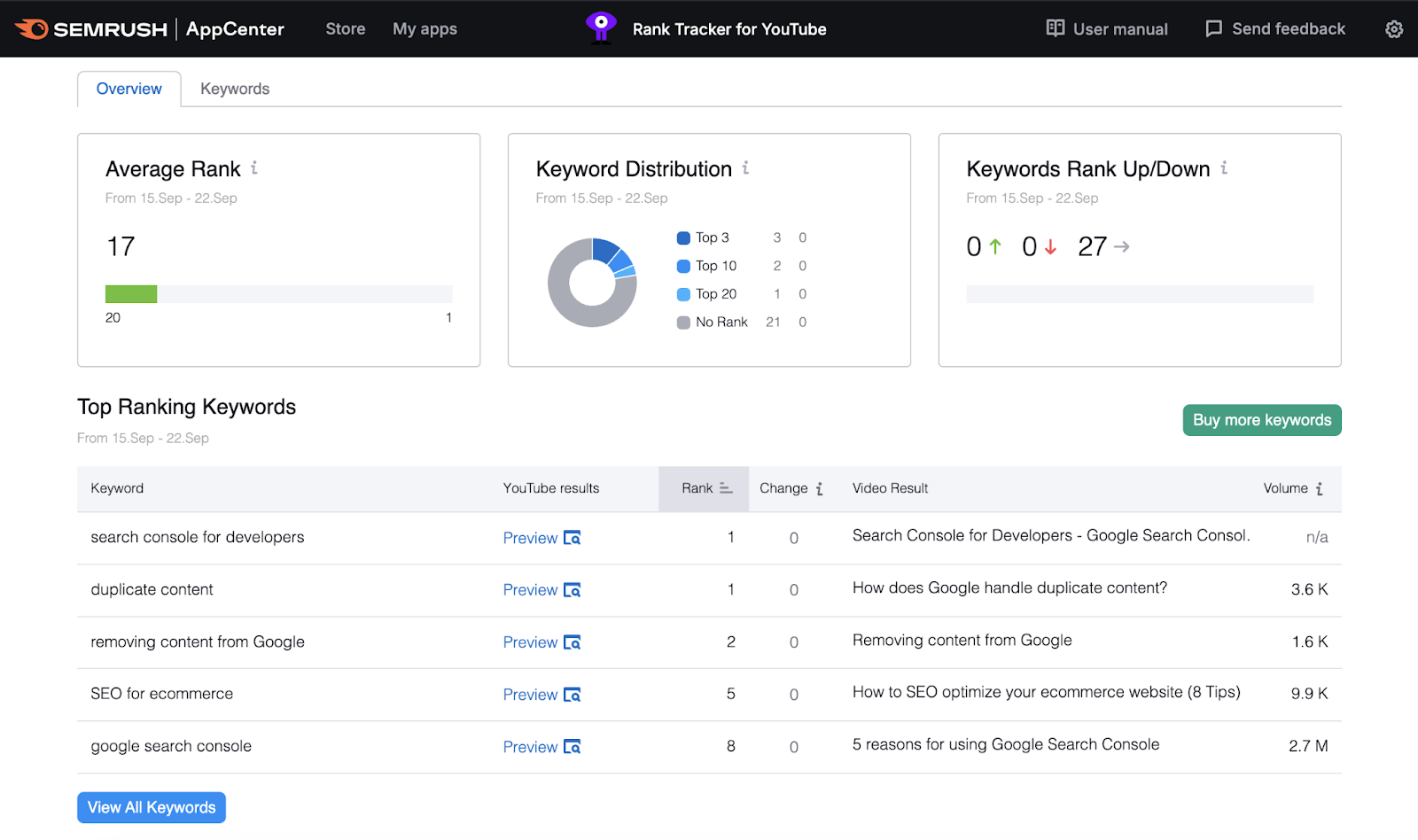
The most successful YouTube marketers don't just create great content. They constantly measure and improve.
Start tracking today. And watch your YouTube presence grow.
